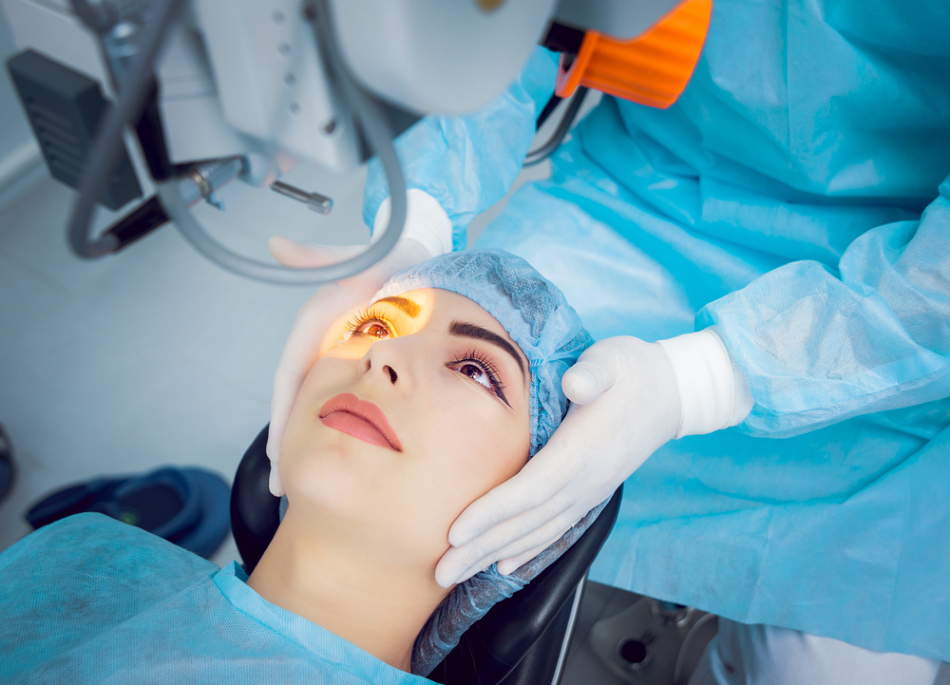Apr 8 2020

Image Credit: Roman Zaiets/Shutterstock.com
Cataract is one of the most prevalent eye diseases. The World Health Organization (WHO) has estimated that up to one-third of all visual impairments are associated with cataracts. While the treatment techniques are quite popular, they can be traumatizing at times.
For more than two decades, researchers from ITMO University and the S.N. Fyodorov Eye Microsurgery Complex have been working to reduce the side effects associated with cataract surgery. They ultimately developed a technology in which a laser is utilized to activate the regeneration of adjacent tissue and also to destroy the clouded-eye lens.
The scientists have comprehensively described their technique in an article that was recently reported in the Optical and Quantum Electronics journal.
The eye is, undoubtedly, the most vital organ. A healthy eye allows individuals to see in the dark and in the light, trace fast objects, and read fine print. However, if anything goes wrong, the eyesight can degrade quickly or even disappear totally.
Cataract, or the clouding of the lens, is one of the most common issues faced today. The treatment techniques for cataract are being continuously enhanced; for instance, ITMO University researchers are working on this subject in association with experts from the S.N. Fyodorov Eye Microsurgery Complex.
The treatment method is surgical and has to do with removing the clouded eye lens and replacing it with an artificial one made of plastic or sapphire. The eye lens is destroyed either with ultrasound or a laser.
Andrey Belikov, Professor, ITMO University
Belikov continued, “When using a laser, a special tip is inserted into the anterior chamber of the eye close to the lens, and the laser breaks the lens into tiny fragments that are then removed from the eye. An artificial lens is then put in their place. The problem is that this process damages the adjacent tissue, and the regeneration doesn't always go well.”
In the past few years, several scientists have been attempting to decrease the traumatizing impact of cataract surgery. Later in 1997, a research team from S.N. Fyodorov Eye Microsurgery Complex and ITMO University, and also many other research institutions, began experiments by using laser radiation to destroy the cataract.
Over time, the surgeons observed that the less powerful laser not only lights up the surgical field but also triggers the regeneration of the impaired tissue. Hence, they started performing experiments with an aim to identify the best interaction technique between the illuminating and the destroying lasers. It was found that the most efficient technique is to use both lasers concurrently.
This concept demanded extensive work from optical engineers: since it is highly undesirable to penetrate the eye with two instruments simultaneously due to the radiation of both lasers, it was essential to utilize a common optical fiber.
The simultaneous use of two lasers is good because we get cells that are damaged but not destroyed. And it's very important to stimulate their regeneration at once. This way, the regeneration process takes place in the most favourable conditions.
Andrey Belikov, Professor, ITMO University
For now, the technique has already been implemented at the clinic of the S.N. Fyodorov Eye Microsurgery Complex, and nearly all the cataract surgeries performed at the clinic utilize two lasers.
It has been clinically proven that the use of this technique over the long term helps decrease the loss of corneal endothelial cells by 1.8 times when compared to ultrasonic phacoemulsification, and so far, there have been no reports of endothelial-epithelial corneal dystrophy or macular edema.